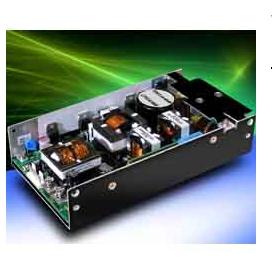

Industry News
TDK-Lambda Announced the Single Output CFE400M
Published:2011/12/9 3:24:00 Author:Amy From:SeekIC
TDK-Lambda announced the next generation of digitally controlled, AC-DC medical power supplies – the single output CFE400M. The CFE400M meets IEC/EN/UL/CSA 60601-1 Ed 2 & 3 safety approvals for medical equipment, suitable for BF (body floating) type medical applications.
Available in field adjustable 12V, 24V and 48Vdc versions with a 12Vdc / 0.25A fan supply, the CFE400M has a 5V/100mA standby power output or a 5V/2A option. The 100mA option meets the ErP Directive with less than 0.5W standby power consumption and all models meet or exceed Climate Savers Silver level. Other features include high efficiency (94%), remote ON/OFF and remote sense. These features combined with a small 178 x 100 x 40mm size make the CFE400M well-suited for many types of medical and dental equipment and other high integrity applications including ATE, automation, broadcast, instrumentation, routers, servers and security networks.
The interleaved boundary mode boost converter halves the current through each PFC choke and reduces the ripple current in the boost capacitor – this in turn reduces the temperature of the boost capacitor and increases its life. Below half load one converter is disabled, reducing losses and increasing efficiency. At really low loads (around 50W), the PFC burst mode function operates, which increases the low load efficiency of the CFE400M still further. The zero-voltage switching (ZVS) resonant converter on the output reduces the noise, improves the EMC and reduces the amount of filtering required on the output. Since there are lower switching losses due to the use of ZVS overall efficiency is further increased.
The microprocessor on the CFE400M controls the output of the resonant converter and looks after the remote ON/OFF function. It also controls the current limit and peak current operation, which enables the CFE400M to power inductive and capacitive loads without malfunction. The EFE series, the micro also looks after housekeeping routines, such as controlling the timing to turn power on and off and looking after the PFC, thereby reducing the overall control circuit component count by 25%.

Reprinted Url Of This Article: http://www.seekic.com/blog/IndustryNews/2011/12/09/TDK_Lambda_Announced_the_Single_Output_CFE400M.html
Print this Page | Comments | Reading(584)
Article Categories
New published articles
· Imagination works with TSMC to develop FinFET process
Author:Ecco Reading(33507)
· XMOS pushes event-driven MCUs with lower price
Author:Ecco Reading(3534)
· Intel brings upgraded 32-nm SoC for smartphones
Author:Ecco Reading(3250)
· Micron pushes TLC 128-Gbit NAND flash
Author:Ecco Reading(3816)
· Intel will stop supplying desktop motherboards
Author:Ecco Reading(5341)
· Processor market was expected to regain strength in 2013
Author:Ecco Reading(3318)
· It was reported that TSMC sales fall steeply
Author:Ecco Reading(3474)
· Cisco, NXP work with auto wireless startup
Author:Ecco Reading(3620)
· Micron was impacted by manufacturing glitch
Author:Ecco Reading(4017)
· China can make 22-nm transistor by themselves
Author:Ecco Reading(3819)
· Chip market rebound is coming, according to survey
Author:Ecco Reading(3760)
· Sony, Toshiba will spend more on chips, iSuppli reports
Author:Ecco Reading(3790)
· Qualcomm becomes the 13th company to join NFC Forum board
Author:Ecco Reading(6103)
· TSMC increases building work for FinFET fab
Author:Ecco Reading(3778)
· TI plans to cut 1,700 jobs in OMAP shift
Author:Ecco Reading(4587)